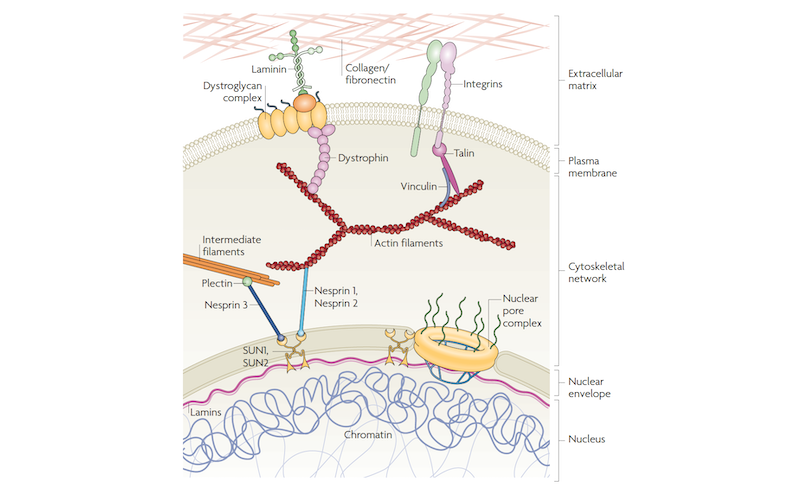
Terminology:
1. mechanobiology can be described as the conversion of mechanical forces into chemical signals which then modify physical architecture
2. biotensegrity is explored further in POSTURE (the final module of MESHWORK Fundamentals)
For now it is enough to understand that biotensegrity:
– is the overarching architectural motif of mechanobiology
– underlies the structural continuity of the body
– simultaneously connects all parts to the whole
– interconnects across all scales from molecules to gross anatomical structures
– responds to movement and mechanical forces
3. Mechanosensitive molecules connect and translate mechanical forces into meaningful cellular communication and responses.
The connection between mechanobiology and biotensegrity enables the regulation of biomechanical homeostasis across all scales. Mechanosensitive molecules are nested within biotensegrity networks. These continuous networks are composed of the extracellular matrix, specialised cells and their internal cytoskeletal scaffold. These elements are the building blocks of all tissues and organs.

This arrangement has been described by Donald Ingber as:
‘multiple linked modules stabilised by similar rules, a local stress is borne by multiple prestressed elements that arrange at multiple size scales, rather than deform and yield locally – these rearrangements occur without compromising structural integrity, and they cause the entire physical network to physically strengthen when mechanically stressed.’
Ingber is perhaps the most influential researcher in the field of mechanobiology. He has repeatedly warned against the tendency to focus on:
‘the action of any single mechanotransduction (mechanosensitive) molecule’. He encourages researchers in the field to view the ‘process of cellular mechanotranduction in the context of living anatomy (embodied) and as a manifestation of structural hierarchies and biological architecture’.
The biological architecture that Ingber refers to above is biotensegrity – which he elaborates on in the following:
‘our ability to sense mechanical forces at the cellular level is a direct manifestation of how our bodies are constructed’ – ‘if we seek out and study individual biological parts in isolation without considering the contributions of multi-scale architecture and invisible internal forces, we will never be able to fully understand how physical forces influence biological form and function’
This view of mechanobiology is part of the reason why the extracellular matrix (including fascia) is now regarded as an ancient metasystem. This metasystem employs, material and structural mechanisms and rules – to convey information without the need for neural mediation.
FEATURED IMAGE:
Diana E. Jaalouk and Jan Lammerding. Mechanotransduction gone awry (2009).
